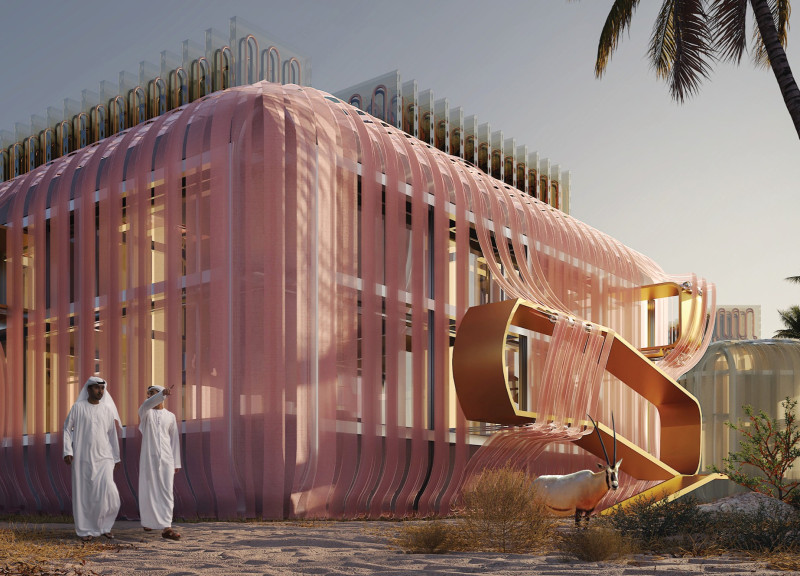5 key facts about this project
The architectural design thoughtfully arranges various spaces to promote fluid movement and interaction. Entryways are welcoming, leading into expansive living areas that encourage social engagement while also allowing for private retreats. This duality of function is central to the project, acknowledging the need for both communal and individual spaces in today’s lifestyle. The carefully planned layout ensures accessibility and convenience, making the design user-friendly and adaptable to a range of activities.
A notable characteristic of this project is its emphasis on materiality. The use of concrete, glass, wood, and steel reflects a commitment to both durability and modern design aesthetics. Concrete forms the backbone of the structure, providing a solid foundation while allowing for innovative design solutions. Glass facades enhance the connection to the outdoors, inviting natural light into the interior spaces and blurring the lines between inside and outside. Wood adds warmth and texture, contributing to a sense of comfort that invites users to engage with the space. Steel elements serve not only structural purposes but also introduce a contemporary industrial touch to the overall visual language.
Unique design approaches are abundant throughout the project. For example, the integration of biophilic design principles promotes a strong connection to nature, supporting the well-being of inhabitants. Strategic landscaping, including green roofs or garden spaces, complements the architecture and enhances environmental sustainability. This intentional inclusion helps to reduce heat retention and promotes biodiversity in urban settings. Furthermore, energy-efficient technologies are employed seamlessly within the design, underscoring the importance of sustainability in modern architecture.
The functionality of the project is further enhanced by carefully considered circulation paths that guide users intuitively through the space. Open sightlines maintain a sense of spaciousness, while distinct zones delineate different activities, enabling seamless transitions from one area to another. Attention to sound insulation and climate control enhances comfort, ensuring a peaceful and pleasant living environment.
Moreover, the architectural designs reflect the cultural and contextual influences of the geographical location, making the project a significant addition to the local landscape. Adopting local craftsmanship and integrating indigenous materials where possible adds authenticity to the architectural narrative, fostering a sense of place that resonates with the community.
In sum, this architectural project represents a thoughtful synthesis of design principles, functionality, and sustainability. Its careful detailing and innovative approaches offer a compelling case study in modern architecture. Readers are encouraged to explore the project presentation further to uncover the nuanced architectural plans, sections, designs, and ideas that underpin this meaningful endeavor. Delving into these elements will provide deeper insights into the project's vision and execution.


 Amirali Merati
Amirali Merati 




















